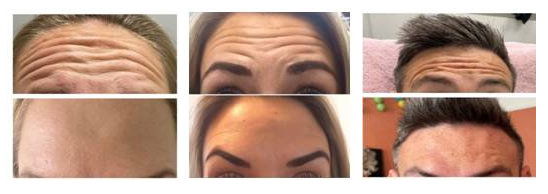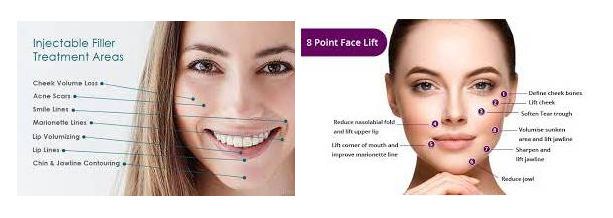In the ever-evolving world of aesthetic enhancements, Botox and dermal fillers have become household names, promising a refreshed and youthful appearance. As individuals seek non-surgical solutions to combat the signs of aging, understanding the distinctions between these two popular treatments becomes crucial. In this article, we delve into the key differences between Botox and dermal fillers, shedding light on their mechanisms, safety considerations, and the regulatory landscape in the UK.
Brief Description of Botox and Dermal Fillers:
Botox and dermal fillers are both cosmetic treatments designed to reduce the visible signs of aging, but they achieve this goal through different mechanisms. While technically a brand name, Botox, short for botulinum toxin, is a neurotoxin that temporarily paralyzes muscles when injected. By doing so, it smoothes wrinkles and fine lines caused by muscle contractions, commonly found in areas like the forehead, crows feet, and frown lines.

On the other hand, dermal fillers, as the name suggests, fill specific areas under the skin to add volume and reduce the appearance of wrinkles. These fillers typically consist of hyaluronic acid, a substance naturally present in the body, and are injected into areas with volume loss, such as the cheeks, lips, and nasolabial folds.

The Difference Between Botox and Dermal Fillers:
The fundamental difference lies in their mode of action. Botox addresses dynamic wrinkles caused by muscle movement, while dermal fillers tackle static wrinkles resulting from the loss of volume and collagen in the skin. Therefore, the choice between the two depends on the specific aging concerns of the individual.
Indeed, the best results are often seen when the two treatments are used alongside each other as part of an ongoing aesthetic treatment plan.
What is Juvederm?
Here at Radiant, we choose to use a brand called Juvederm which is a hyaluronic acid-based dermal filler. It comes in various formulations, each tailored to address specific concerns, such as adding volume to the cheeks, smoothing lines around the mouth, or enhancing lip fullness. The use of Juvederm has gained popularity due to its effectiveness and natural-looking results. Juvederm is often considered to be a ‘premium’ product due to the clinical data and studies that it boasts.
The prescribing of Botox & dermal filler in the UK:
In the UK, Botox is a prescription only medicine, which means that it must be prescribed and given to a patient by a qualified prescriber. If you are not having the treatment done by a qualified prescriber, they should still refer you to a medical professional (the person who prescribes the Botox for them) to check that you are fit for the treatment. By law, the person prescribing the Botox should be a doctor, nurse, dentist or prescribing pharmacist. Guidelines from the General Medical Council (GMC) state that they should meet you face to face and must be present at the client consultation. When the prescriber is happy, you can then be treated. The prescriber also has responsibility for the outcome of the treatment. Many doctors and nurses are unlikely to want to take responsibility for a non-medical person’s injecting work, so be sure to check that you are happy with the person you have chosen for your Botox treatments.
Unlike Botox, dermal fillers do not require a prescription. This means that the Industry is essentially unregulated. While all cosmetic procedures carry some element of risk, calls for increased regulation when it comes to dermal fillers have been gaining increased momentum. The JCCP recently launched a national petition to ‘Make Dermal Fillers prescription only and relevant insurance mandatory’. The petition notes, “Reviews of patient attitudes have exposed a gap between levels of legislation and protection expected by patients and the reality. Classification of fillers as a prescription only device would close this gap”.
Commenting on the petition, Professor David Sines, chair of the JCCP said, “By restricting fillers to be prescription devices only you would provide professional oversight for non-prescriber practitioners who can access them. As would making the insurance required mandatory in accordance with prescription riser requirements. I would encourage all practitioners in the specialty to sign the petition and advise their patients to as well.”
As the Lead Practitioner at Radiant, Karen has a BSc & MSc in Advanced Clinical Practice. Karen is a prescriber and an Advanced Nurse Practitioner.
Are Dermal Fillers Safe?
When administered by qualified and trained practitioners, dermal fillers are generally safe. However, like any medical procedure, there are risks and potential side effects, such as bruising, swelling, or allergic reactions. Choosing a reputable and experienced practitioner significantly minimizes these risks. Additionally, adherence to the prescribed aftercare instructions is crucial for a safe and successful outcome.
Radiant is a member of ACE (Aesthetic Complications Expert) and Save Face. ACE was created to help improve patient safety in medical aesthetics by producing evidence-based, peer reviewed guidelines for the management of a wide variety of complications. ACE also provides help and advice and support for practitioners that encounter a complication, hosts a forum for practitioners to share advice, provides email and Emergency Helpline support, educational modules, workshops, a faculty of experts, journal articles and much more. ACE entry will be offered to those with a medical background only.
Save Face is a Government approved register for medical aesthetics practitioners and treatments. All practitioners on this register have passed a rigorous assessment of their clinic, background, products and training. The Save Face website is an invaluable place for clients to access information.
Safety implications of an industry that is largely unregulated:
The aesthetics industry in the UK has witnessed a surge in popularity, leading to concerns about the safety of individuals seeking cosmetic treatments. A poorly regulated industry poses significant risks, including the potential for unqualified practitioners to administer Botox and dermal fillers. This can result in complications, suboptimal outcomes, and even serious health issues.
Regulatory bodies, such as the General Medical Council (GMC) and the Nursing and Midwifery Council (NMC), play a crucial role in maintaining standards and ensuring the competency of practitioners. However, challenges persist in enforcing regulations, and there is ongoing debate about the need for further measures to safeguard the public.
Conclusion:
In the pursuit of a more youthful appearance, it is paramount for individuals to be well-informed about the differences between Botox and dermal fillers. Choosing a qualified and experienced practitioner, adhering to regulatory guidelines, and understanding the safety implications of an unregulated industry are essential steps toward achieving optimal results while minimizing risks. As the aesthetics landscape continues to evolve, knowledge and discernment become powerful tools for those seeking cosmetic enhancements.
Radiant has clinics in Ringmer and Heathfield as well as a client base in Essex and Brighton.

